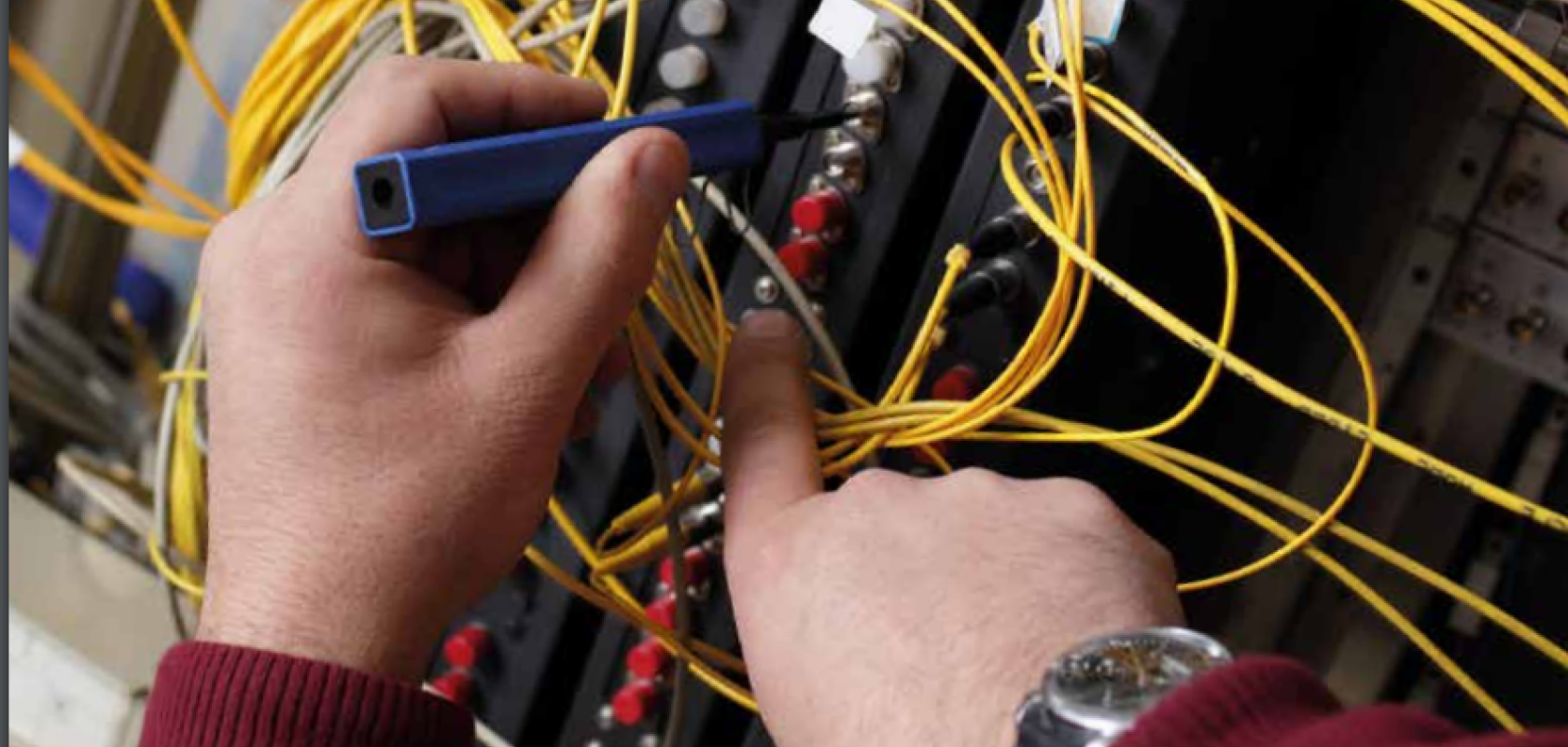Brian Teague offers the time and motion argument for inspection and cleaning in fibre cable assemblies
Fibre optic cable assemblies are widely used because of their ease of installation. The connectors we use on the fibre optic cable assemblies are easy to connect and disconnect for new installations and maintenance of our optical networks.
Connector types, including the SC, LC and MPO, are mechanically stable and reliable. The polishing processes used for terminating the fibre optic connectors have experienced many advancements over the past five years to improve the reflectance and alignment process for getting some of the lowest losses as the light signal travels through a mated connector pair.
The one constant that holds true to all fibre optic connectors is the importance of the surface quality of the fibre optic connector end-face. Scratches, embedded dust particles and residues in the contact zone of a mated connector pair will disrupt the path through which the light travels, as it crosses out of the transmitting connector’s end-face into the receiving connector’s end-face. The best way to get optimal performance from fibre optic connections is to proactively inspect and clean both ends of a mated connector pair.
Time constraints
There most common reason cited on why many in the industry do not have a proactive approach to inspection and cleaning fibre optic connectors is, ‘I do not have time to do that.’ There is a misconception that taking the time to inspect and clean every end-face during a network inspection project would be too time consuming, which drives up the installation costs.
Let’s take a look at an example to determine the impact of time and potential cost of undertaking a fibre installation project connecting 288-fibre from a centrally located server to six different locations throughout a building. Each remote location will have two 24-fibre cable assemblies going through the indoor conduit in a normal setting and will run 45m. To do a 100 per cent inspection for each connector for both ends of a mated connector pair in this type of installation would require the inspection of 1,152 end-faces in total.
According to the National Electrical Contractors Association (NECA) Manual of Labor Units, it would take five man-hours to pull each 24-fibre cable assembly 30m in normal conditions. For the sake of this case, we will assume the installation will happen under normal conditions. The installation would increase by 25 per cent or more in difficult conditions. It will take the installation team seven-and-a-half hours to run each of our 24-fibre cable assemblies. Since there are two cable assemblies going to six different locations, the total amount of time to run all 12 of the cable assemblies is 90 man-hours using NECA labour units.
And repeat
Doing a 100 per cent inspection for all of the end-faces of a 288-fibre installation comes out to 1,152 end-faces. This equates to four end-faces per fibre since the installation will need to be at the end-faces on end one and end two of the assembly, plus the in-adapter end-faces inside panel one and panel two. The installer in our example is going to use an automated inspection software that comes with the inspection scope to help with this process. One advantage of using inspection scopes with a quality inspection software is the elimination of human subjectivity and ensured repeatability for making a judgement, if the surface quality of the end-face in the critical contact zone is acceptable and does not increase the signal loss.
Most of the inspections scopes available on the market come with the inspection software set to the visual pass/fail criteria from the industry standard IEC 61300-3-35. Another key advantage of using inspection scopes with inspection software is being able to create reports documenting the end-face quality, which include the option to enter reference values for identifying the specific connector that underwent the inspection at the time inspected.
Most of the reports generated by the inspection software provide a time stamp to document the precise time when the inspection took place using a process that takes two seconds. The total time needed to do a 100 per cent inspection of all 1,152 end-faces to the IEC 61300-3-35 standard using an inspection scope with the automated inspection software would take the installation team an extra 38.4 minutes. The 100 per cent inspection of all 1,152 end-faces increases the project time 0.7 per cent going from the original 90 hours planned to 90 hours and 40 minutes.
Safe travels
Physical contact fibre optic connectors like the LC, SC and MPO depend on a spring located inside the connector body, behind the ferrule, to create a contact force when two connectors are mated. This creates a highly-stable situation for light to travel with minimal disruptions as it exits the transmitting connector into the receiving connector.
The strong contact force also prevents dust particle migration from entering into the contact region of a mated connector pair. If an installer does decide to skip the proactive inspection and cleaning step and one of the connector end-faces has some contamination, it will create problems. Dust particles that are caught in between a mated connector pair will embed into the surface of both connectors. This dust becomes a permanent defect in the surface, that is no longer removable. When this happens, the only solution is to replace both ends of the connector pair, which will drive up the cost of the installation to correct the damaged end-faces. The costs associated with skipping the inspection and cleaning process are avoidable and will end up extending the project longer and require the purchase of replacement components to correct the damage.
If the decision is made to splice on replacement assemblies, the repair will be the cost of the two pigtail assemblies plus the labour of installation testing. The NECA labour units for doing a single strand splice is 0.3, which is about 18 minutes. The NECA labour units for installing an anaerobic field install connector is 0.25, or 15 minutes per end. The installer will need to carry out some basic testing to ensure the replacement of the two damaged end-faces are working. The light side The NECA lists 0.2 labour units for continuity testing with a light source and 0.3 labour units for doing a single wavelength bi-directional test using an optical power meter and light source. The replacement connectors, plus the additional 30 to 40 minutes getting the replacement connectors – along with 30 additional minutes of testing – far exceeds the amount of time it would have taken to proactively complete the 100 per cent inspection.
A proactive 100 per cent process of inspecting each end-face would have also avoided other expenses, such as dealing with frustrated customers, paying for truck roll-backs, expedited freight for replacement parts, or paying overtime expenses for fixing problems. The excuse, ‘I do not have time to do that’ is someone not thinking things through. There was a basketball coach who used to ask his players, ‘If you don’t have time to do it right, when will you have time to do it over?’ John Wooden has passed away, but wisdom lives on.

Brian Teague is a member of the Electronics Technicians Association (ETA) and the Building Industry Consulting Service International (BICSI)


